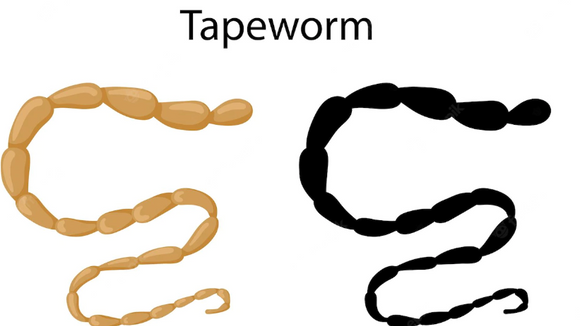What are the most common internal parasites in humans
There are various parasitic worms that can settle in the human body. Among them, the most popular are flatworms, roundworms and spinech worms. There are three types of parasites that cause disease in humans. These are:
- Protozoa: Protozoan parasites are unicellular organisms. Protozoa can only multiply or divide in the host. Protozoa include Plasmodium malariae, which causes malaria infection, and Cryptosporidium, which is ingested.
- Helminths: These are worm parasites. They are usually visible to the naked eye at a more advanced stage. Unlike protozoa, they cannot reproduce in humans. This includes the parasites Ascaris lumbricoides and hookworm.
- Flatworms: Cestoda is a class of flatworm parasitic worms. Most of the species - and the best known - are those in the subclass Eucestoda; They are bandworms as adults, known as tapeworms. Tapeworm infection is caused by ingestion of food or water contaminated with eggs or tapeworm larvae. Also, if you swallow eggs of certain types of tapeworms, they can migrate outside the intestines and form larval cysts in body tissues and organs. This category includes beef and pork tapeworm.
Parasitic infections caused by intestinal helminths and protozoan parasites are among the most prevalent infections in humans in developing countries. In developed countries, protozoan parasites cause gastrointestinal infections more often compared to helminths. Nematodes (roundworms), cestodes (tapeworms) and trematodes (flatworms) are among the most common helminths inhabiting the human intestine.

There are four types of intestinal helmintic parasites, also known as geohelminths and helminths transmitted from soil: Ascaris lumbricoides (roundworms), Trichiuris trichiuria (flagellas), Ancylostoma duodenale and Necator americanicus (hookworms). These infections are most prevalent in tropical and subtropical regions of the developing world, where adequate water and sanitation facilities and facilities are lacking.
The most common intestinal protozoan parasites are:
- Giardia intestinalis,
- Entamoeba histolytica
- Cyclospora cayetanenensis
- Cryptosporidium spp.
The diseases caused by these intestinal protozoan parasites are known as lambliosis, amoebiasis, cyclosporiasis, and cryptosporidiosis, respectively. Infection usually occurs by a fecal-oral mechanism when consuming contaminated food or water, and diarrhea is characteristic.
Symptoms of internal parasites in humans

Parasites can live in the body, mostly in the intestines, for years without causing any symptoms. When they decide to cause them, the symptoms can be:
- Diarrhea
- Nausea or vomiting
- Gas, or bloating
- Dysentery (loose stools containing blood and mucus)
- Rash or itching around the rectum or vulva
- Stomach pain or tenderness
- Attenuation
- Skin bumps or rashes
- Sleep problems
- Anemia
- Allergies
The most common intestinal parasites that can cause infection
Tapeworm (Cestoda)
You can become infected with tapeworm, which is a type of flatworm, by drinking water contaminated with eggs or tapeworm larvae. Raw or undercooked meat is another way tapeworms can find their way to people. The tapeworms stick their heads in the intestinal wall and stay there. From there, some types of tapeworms can produce eggs that mature into larvae, and the latter migrate to other parts of the body.
Tapeworm looks like a long white narrow stripe. They can grow up to an impressive 24 meters in length and live in a person up to 30 years. 2
Methyls (Trematoda)
Flukes are another type of flatworm. Animals are more likely than humans to develop infection by flukes. Raw cress and other freshwater plants are the main sources of flukes in humans. You can also get infected with them by drinking contaminated water.
They create their home in the intestines, blood or tissues of the host. There are many varieties of flukes, and no one reaches more than a few centimeters in length.
Ancylostomas
Hookworm is a type of roundworm transmitted through feces and contaminated soil. The most common way to contact this type of roundworm is to walk barefoot on soil containing hookworm larvae. They can pass through the skin. Usually, hookworms live in the small intestine, where they attach to the intestinal wall with a "hook".
Pinworms (filamentous worms) (Enterobius)
These parasitizing worms are small, relatively harmless roundworms. When fully ripe, they live in the colon and rectum. Their eggs can survive on bedding, clothing and other materials. People become infected with pinworms through the mouth or when they touch eggs. Infections with pinworms are more common in children and in institutions such as kindergartens and schools.
Trichinella
Trichinella is transmitted mostly among animals. The most common way that people become infected with trichinosis - the disease caused by this roundworm, is by eating insufficiently cooked meat, which contains larvae. The larvae ripen in the intestines. While reproducing, these larvae can get into muscles and other tissues.
Methods of diagnosis and treatment
The tests a doctor may order to diagnose a parasitic infection depend on factors such as the person's symptoms, other medical conditions, and a history of travel to other countries.
Below are some of the tests commonly used to diagnose a parasitic infection:
- Feces diagnosis: If a person has diarrhea, gas, or other stomach symptoms, three or more stool samples may be collected on different days and tested for a parasite or parasitic egg.
- Endoscopy: If the stool samples do not contain a parasite, a thin tube called an endoscope can be inserted orally into the intestine to check for the presence of parasites.
- Colonoscopy: As an alternative to endoscopy, a tube through the rectum into the intestine can be inserted to detect parasites.
- Blood tests: A health professional may perform a blood test to detect a specific parasitic infection. Serology is a blood test that shows antibodies or parasitic antigens. Another method is the blood smear, in which a drop of blood is examined for parasites under a microscope.
- Imaging tests: An X-ray can help detect parasite-related lesions in a person's organs. For more detailed information about organs, a doctor may recommend MRI or computed axial tomography (CAT).
Complementary and alternative therapies for internal parasites
Conventional medical treatments can help you deal with parasites faster and with fewer side effects than most alternative treatments. Alternative remedies can be useful along with conventional medications. However, your doctor should find out what kind of organism is causing your problems before starting treatment. The following guidelines are common and can help prevent the growth of internal parasites:
- Avoid simple carbohydrates, such as those contained in refined foods, fruits, juices, dairy products and all sugars.
- Eat more raw garlic, pumpkin seeds, pomegranate, beets and carrots, all of which are traditionally used to kill parasites. In one study, researchers found that a mixture of honey and papaya seeds cleared feces of parasites in 23 out of 30 subjects. [Ref. 2] Drink plenty of water to hydrate your body well.
- Eat more fiber, which can help get rid of worms.
- It is recommended to take probiotics such as Lactobacillus acidophilus, Lactobacillus plantarum, Saccharomyces boulardii and bifidobacteria. They help maintain a balanced gut microbiome.
- Digestive enzymes will help restore the intestinal tract to its normal state, making it inhospitable to parasites. Papain is an enzyme from the papaya plant that can help kill worms when taken 30 minutes before or after a meal.
- Vitamin C supports the immune system, but it should not be taken in large quantities, otherwise it can cause diarrhea.
- Zinc also supports the immune system. Zinc may interact with certain medications, especially some antibiotics, and may not be suitable for people with HIV/AIDS.





